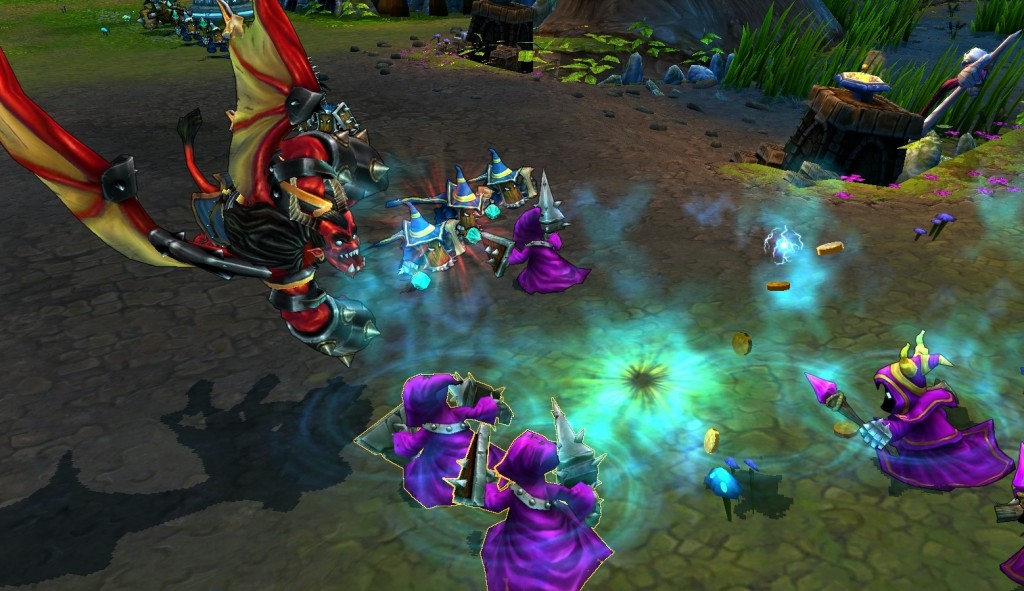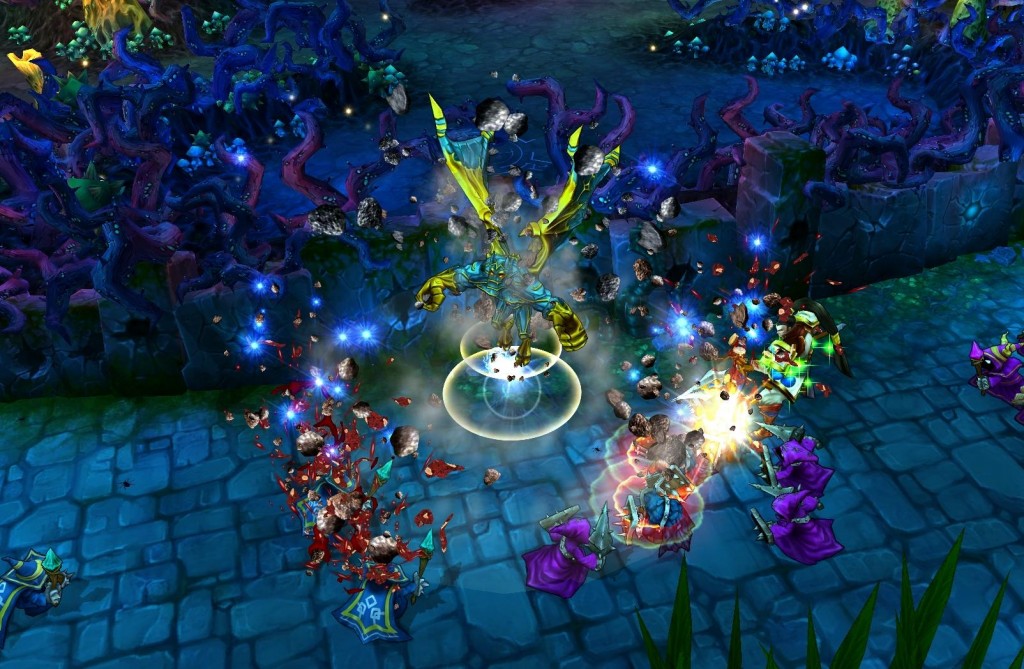The Future of E-sports: League of Legends
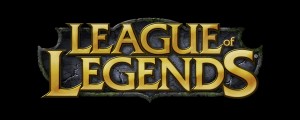 If you unwittingly tuned into the League of Legends Season 2 Championship, you might have thought it was a major sports event. All of the key elements you’d expect were present: the screaming crowds, the fan-made signs being waved in the air, the girls swooning over the competitors, the announcers dressed in sharp suits discussing the teams… But when you looked at the details, things started to become confusing. Why were so many of the fans wearing stuffed turtle hats? Who were these teams – Azubu Frost, Counter Logic Gaming, Taipei Assassins, Team Solomid – and why haven’t you heard of them before? Why was that sharply dressed commentator being referred to as Phreak? Are those computers on stage? Welcome to League of Legends, one of the largest modern e-sports helmed by Riot Games, and we are currently witnessing their run at the big time. When we watch these events unfold, it becomes obvious that League of Legends is on the precipice of finding its image as a sport, and the global nature and enormous size of the events are showing the stark contrasts of possible paths for the future of League’s e-sports identity.
If you unwittingly tuned into the League of Legends Season 2 Championship, you might have thought it was a major sports event. All of the key elements you’d expect were present: the screaming crowds, the fan-made signs being waved in the air, the girls swooning over the competitors, the announcers dressed in sharp suits discussing the teams… But when you looked at the details, things started to become confusing. Why were so many of the fans wearing stuffed turtle hats? Who were these teams – Azubu Frost, Counter Logic Gaming, Taipei Assassins, Team Solomid – and why haven’t you heard of them before? Why was that sharply dressed commentator being referred to as Phreak? Are those computers on stage? Welcome to League of Legends, one of the largest modern e-sports helmed by Riot Games, and we are currently witnessing their run at the big time. When we watch these events unfold, it becomes obvious that League of Legends is on the precipice of finding its image as a sport, and the global nature and enormous size of the events are showing the stark contrasts of possible paths for the future of League’s e-sports identity.
League of Legends is a MOBA game (Multiplayer Online Battle Arena), where you team up with four other players to face a team of five human opponents. You each control one unit (a champion) with four abilities and a passive ability or stat booster. While there are three maps to play on: Summoner’s Rift, Twisted Treeline, and Dominion – Summoner’s Rift is the most popular by far. The players must go down one of three lanes, separated by a jungle full of neutral mobs, to destroy the enemy towers, inhibitors and the opponent’s Nexus, which wins the game. The map remains static; just like football, the fun of the game isn’t in the arena it’s played in but the combination of players on the field and tactics they employ. Summoner’s Rift is the map the developers balance champions and items around for the most part, and it’s also considered the map with the widest variety of viable champions. The tactics employed are part of the divide between North American, European and Asian teams, with each region having different strengths and weaknesses.
League of Legends is hardly an original concept but the execution of graphics, gameplay, and design make it the most successful type of its genre in the world right now. Competition has been coming fast and thick, and yet League manages to stay on top of its rivals. Smite, Bloodline: Champions, DOTA 2, and Heroes of Newerth are just some of the other games in the genre that have failed to garner the success of League of Legends. The MOBA genre dates all the way back to the Starcraft mod Aeon of Strife and then later the Warcraft III mod Defence of the Ancients, but the League of Legends Season 2 World Championship was the pinnacle of the genre thus far with a five million dollar prize pool and teams flying in from all around the world.
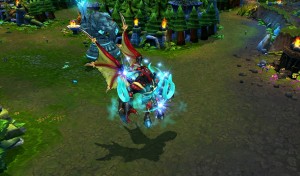 It is very apparent in some ways that Riot Games is a young company. For example, at the Season 2 Championship, technical issues with the connection often interrupted the flow of the games. While even the largest and most efficient companies in the world sometimes run into technical issues occasionally, there were also some embarrassing mishaps that diminished the impressive scope of the event. Riot failed to track the movement of the sun in the sky and the partially outdoor event had to be delayed due to sun glare on monitors. A much more costly issue was the positioning of the monitors meant for the crowd relative to the teams. The teams were able to turn their heads to see the mini-map that showed both teams’ movement, and two teams were caught in the act of peeking, leading to fines of thirty thousand dollars each. Starcraft II tournaments often enclose the players in soundproof booths to avoid such issues.
It is very apparent in some ways that Riot Games is a young company. For example, at the Season 2 Championship, technical issues with the connection often interrupted the flow of the games. While even the largest and most efficient companies in the world sometimes run into technical issues occasionally, there were also some embarrassing mishaps that diminished the impressive scope of the event. Riot failed to track the movement of the sun in the sky and the partially outdoor event had to be delayed due to sun glare on monitors. A much more costly issue was the positioning of the monitors meant for the crowd relative to the teams. The teams were able to turn their heads to see the mini-map that showed both teams’ movement, and two teams were caught in the act of peeking, leading to fines of thirty thousand dollars each. Starcraft II tournaments often enclose the players in soundproof booths to avoid such issues.
Despite their inexperience, Riot had the fan-power needed to back them up. Hundreds of thousands of people tuned in or showed up to watch the World Championship for League of Legends’ second season. Riot Games shared the ardent love that they received from their community on a day-to-day basis, whether it was through the Summoner Spotlight that demonstrated arts and crafts by fans, doing Ask Me Anything threads on their official forums about issues like lore and champion design, and holding contests and awards for their player base. When Riot feels they have made mistakes, they never hesitate to apologize and offer players in-game boons and boosts to make up for the inconvenience. These fans hold the power for the future of League of Legends in their hands through their economic support of micro-transactions, their eyeballs being glued to the online stream of tournament, and signing onto the game and logging hour after hour of gameplay. Fans are like Caesar in the gladiator arena of Rome; their thumbs-up or thumbs-down will make or break Riot’s future in competitive e-sports.
The fans’ support goes beyond Riot — they lavish their team of choice with love and attention as well. Behind the new wave of micro-transaction-based free-to-play games lies a shadow industry of players who stream their games with live commentary, tips, or hints. Marcus “Dyrus” Hill is one of the best top lane gamers in the world, playing for the American Team SoloMid. Team SoloMid is the quintessential American team in League; critics applaud their ability to adjust to the wildly different meta-game (the strategies, champion choices, lane arrangement, timing, priorities in game and more that affect in-game performance) that foreign teams bring to the table, as well as their interesting personalities and their cohesion as a team.
Team SoloMid also boast their own online store, where you can buy shirts that read “YOU MAD BRO?”, their own champion guides for inexperienced players, giveaways sponsored by corporations, and news on their latest tournaments. Their vibrant personalities and online presence has drawn comparisons to being like a reality show and these parallels were strengthened when the world watched Team SoloMid’s Brian “TheOddOne” Wyllie admit himself to the hospital from health complications arising from poor eating habits. Dyrus is well-known for toting a pillow (succinctly named ‘Mr. Pillow’) around to tournaments and carrying it in his lap on stage. Andy “Reginald” Dihn released two videos back-to-back after his loss at the tournament both retiring and then un-retiring. Team SoloMid’s skill is matched by their fame (and infamy), their acclaim in the community, their rabid fan-base, and their public presence.
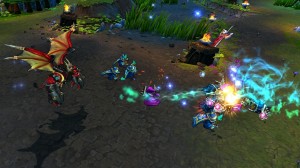 Despite these accolades, Team SoloMid were knocked out of the tournament by Azubu Frost, a Korean team sponsored by a German media group. Azubu Frost tore through the championships taking out Team SoloMid as well as Counter Logic Gaming EU, Invictus Gaming, the European SK Gaming, and made it to second place being felled only by the Taiwanese Taipei Assassins. Park “Shy” Sang-myeon has the least MOBA experience of any player on the tournament circuit and still managed to turn in an impressive performance against every opponent he faced in top lane. In an act of comedy, Azubu Frost would adjust their glasses during their promotional camera shots, cross their arms, and act serious and professional.
Despite these accolades, Team SoloMid were knocked out of the tournament by Azubu Frost, a Korean team sponsored by a German media group. Azubu Frost tore through the championships taking out Team SoloMid as well as Counter Logic Gaming EU, Invictus Gaming, the European SK Gaming, and made it to second place being felled only by the Taiwanese Taipei Assassins. Park “Shy” Sang-myeon has the least MOBA experience of any player on the tournament circuit and still managed to turn in an impressive performance against every opponent he faced in top lane. In an act of comedy, Azubu Frost would adjust their glasses during their promotional camera shots, cross their arms, and act serious and professional.
These players can have as much infamy as North American or European players, as proven by Jang “Woong” Gun-woong of Azubu Frost with his checkered past of trolling and betrayal, but they fail to capitalize on their negative aspects and turn them into marketing opportunities in the same way as the American teams. Instead, the game is always the top priority. We can look to the Taiwanese team Taipei Assassins as the pinnacle of this style of competitive play. If North American players were hoping for any juicy scandals while researching this roster, they’ll find themselves sadly disappointed; the only public trivia floating around about these players are their favourite champions and blood types. Arguably, this play style and mindset is what leads them to victory after victory on the global stage.
In order to understand the identity crisis that League of Legends is facing, we can look at another sport: pro-wrestling. Pro-wrestling is famous for their soap opera storylines and over-the-top personalities. Matches often end with a dramatic finishing movie like the Stone Cold Stunner, not a technical application of force. The cast of Jersey Shore will periodically pop up in the ring to garner a little publicity. World Wrestling Entertainment aims for all ages fun, not a brutal, no-holds-barred match; yet the WWE faces heavy competition from UFC (Ultimate Fighting Championship). The UFC prides itself on real fights. Doctors stay ringside to check on the fighters – there are no flashy special moves or fake punches, and blood frequently splatters across the canvas mat. UFC fighters like Anderson Silva or George St. Pierre are beginning to capture the attention of demographics previously interested in the WWE.
The same schism may be in the future for League of Legends and modern e-sports. There will always be a crowd of young people clamouring to play video games for a living, and there will always be video game companies hoping to capture the demographic of 18-35 year old gamers. But what will the fans prefer? Do fans prefer teams to have vivid personalities, preferably demonstrated on streams and on stage as loudly as possible – or do they prefer devotion to the mechanics of the game and supremacy over their opponents? Which side of the spectacle will win out: the players or the game itself?
Only time can answer these questions, but if the Season 2 World Championship was any indication of what’s to come, the future of modern e-sports should be quite all right. If Riot Games continues with their streak of strong content, regular updates, community participation, game tweaking and balance patches, they will weather any storm. Hopefully, their hardcore fan base leads them in the right direction, and they learn the right lessons from the future tournaments no doubt on the horizon.
About This Post
